
Colombia's $5-billion Hidroituango dam was funded in part by Export Development Canada, a Crown corporation that promotes Canada's trade interests abroad.Photography by Nadège Mazars/The Globe and Mail
Explainer • What is EDC and what does it do?
Luz Elena Gutierrez’s small concrete house looks out over flowering trees and the roofs of her neighbours, down to the rushing caramel-coloured water of the Cauca River and the forested mountain on the other side. She can see the green-tiled front of Our Lady of Mercy, the main church in Puerto Valdivia, and on Sundays, sitting in a plastic chair on the porch, she can watch the slow lines of campesinos coming down the hillsides on mules loaded with burlap sacks of coffee beans – headed into town to unload their harvest, make some purchases, have a few beers in one of five cantinas on the short main street.
The steep pitch of Ms. Gutierrez’s plot of land offers her more than just a view. Last May, it afforded her protection when the river surged over its banks and demolished a chunk of the town.
Her house was unscathed, but most of her neighbours were not so lucky, and to reach her front door today, she has to pass a dozen abandoned dwellings and pick her way through heaps of detritus – mouldy mattresses, shattered wooden dressers, papers dried stiff in the sun and a pair of children’s silver sandals. But after nearly a year out of the house, she moved home not long ago with her two teenage children, fed up with shifting between temporary locations.
“It’s strange here now,” she says. “It’s so quiet.” More than a year after the flood, there has been no cleanup effort and most of the homes in this part of town, nearest the river, bear a stern red sticker saying “no retorno” – you can’t come back – on their crumpled doorways.
Thirty-eight kilometres upstream from Ms. Gutierrez’s house, the Cauca River is bisected by a giant concrete dam. It is the showpiece of the most venerable company in the country, Empresas Publicas de Medellin (EPM), and it was meant to be an emblem of progress in a new era of peace in Colombia.
But on May 12, 2018, a tunnel dug to shunt water around the dam wall during construction burst open and sent a huge wave downstream that forced 25,000 people to flee to higher ground. That disaster has created widespread anger in Colombia, and focused attention on the project’s financing and construction.
The scrutiny extends to Canada, which helped fund the Hidroituango dam. Export Development Canada (EDC), Ottawa’s export-credit agency, backers of the $5-billion project, provided a $466-million loan to EPM. The credit agency, like the dam’s builder, says there was no reason to suspect the project was risky or problematic until the day of the catastrophe.
But a Globe and Mail investigation has found that there were warning signs well before the disaster. Several experts raised questions about changes to the dam design and construction, and warned of a disaster much like the one that occurred a year ago. Others had been asking questions for years about possible corruption in the awarding of contracts.
Those misgivings, however, were drowned out in the chorus of admiration for EPM and this project, which would dam the country’s second-largest river to produce 9,200 Gigawatt hours of electricity a year, nearly a fifth of Colombia’s demand. And they did not dissuade Canada’s export-credit agency, which was eager to do business with EPM.
But when you spend a bit of time talking to Ms. Gutierrez and her neighbours in Puerto Valdivia, where 3,000 people are still displaced and another 27,000 living in an area on high alert, or when you see the dam itself, which is more than a billion dollars over budget and still years away from generating a single watt of power, it all raises questions: What did EDC officials know before they loaned nearly half a billion dollars to EPM? And what should they have known before Canada put its stamp of approval on this project?
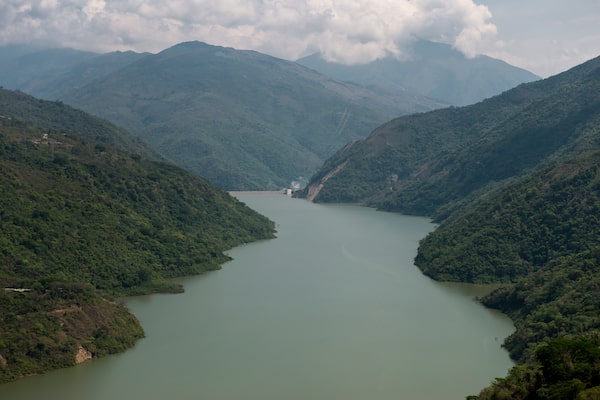
The reservoir at Hidroituango can hold 20 million cubic metres of water from Colombia's Cauca River. During construction of the dam wall, tunnels were designed to shunt water around it. But last year, disaster struck when one of those tunnels burst.

Waves of water coursed over the town of Puerto Valdivia. Today, areas devastated by the flood still lie abandoned.
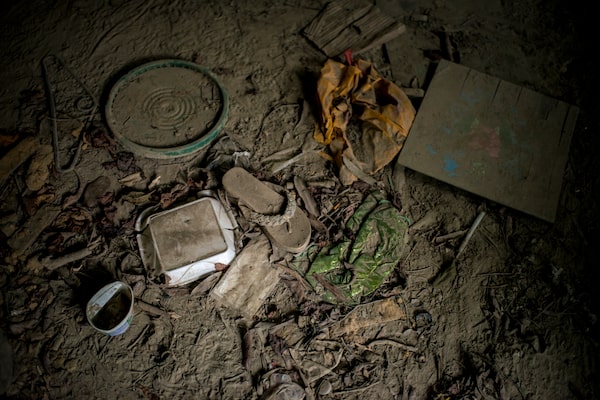
An abandoned home's floor is littered with dirt and the belongings of the original occupants. Many damaged buildings in Puerto Valdivia still bear red stickers reading 'no retorno' – do not come back.
EDC loans money to Canadian companies and borrowers abroad with the goal of generating international orders for Canadian businesses. The Medellin utility was a new client for the company when the loan was made in 2016.
By the agency’s standards, this was a large loan. Of almost 14,000 EDC transactions since 2001 analyzed by The Globe and Mail, only about 140 have been in the $250-million to $500-million range, and just a few dozen bigger than that. As of June 2018, EPM owed EDC $354-million.
Shelley Maclean, a spokeswoman for the agency, told The Globe by e-mail that EPM was screened twice, once when the loan was made, and a year later when its terms were extended.
She says EDC “found the company to have adequate policies, procedures and programs in place at the corporate level related to the environment, anti-corruption, and human rights.”
The loan to EPM “was not in support of a specific project,” Ms. Maclean added, so the dam wasn’t “subject to EDC’s Environmental and Social Review Directive.” However, EPM’s financial statements show that the loan was divided about 55/45 between general EPM investments and construction of Hidroituango.
Neither the agency nor EPM will divulge much about what EDC’s due-diligence screening entailed. EPM says its responses to EDC’s requests "included the supply and analysis of technical, environmental, commercial, financial, contractual, legal, business information of EPM at the corporate level and of the Ituango project.”
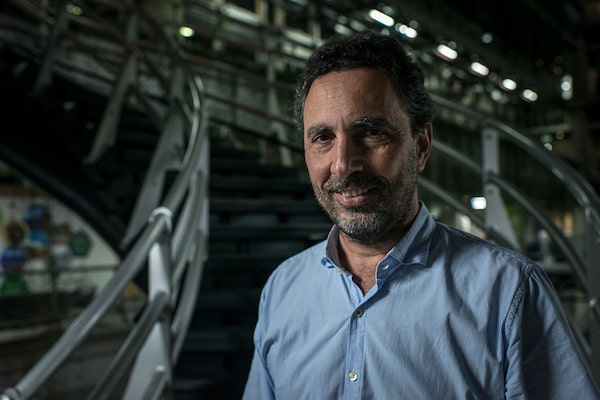
Jorge Londono is chief executive of Empresas Publicas de Medellin, the builders of Hidroituango.
Jorge Londono, chief executive of EPM, says he met with an EDC team in Medellin. “There were EDC missions here, obviously, obtaining information about the loan,” he says. But the events of last May were entirely unforeseen, he says, and nothing EDC could have asked would have hinted at the disaster to come.
This view is not widely shared here. Luis Perez Gutierrez, the governor of Antioquia, Colombia’s wealthiest province, was an industrial engineer before he went into politics, and he wrote a book titled Construction Errors in Hidroituango.
Even though his province jointly owns the dam with EPM, Mr. Perez is a vocal critic of the project. He says there were “disastrous” decisions to rush construction and deviate from the original design of the dam that led directly to the flood in Puerto Valdivia.
Tendering for the project began in 2011, and Colombian media had begun reporting on irregularities in the contracting process the following year.
Internally, EPM’s board of international advisers had sent a strongly worded memo to the company in 2013, warning of the dangers of dramatically changing the design in an effort to make up for lost time, Mr. Perez says, pulling out a copy of the warning from stacks of Hidroituango documents on his desk at the state headquarters in Medellin.
This concern about decisions at EPM was unusual. The company is a Latin American byword, with an image of ambition and efficiency. It owns and operates telecommunications, electricity, sanitation and gas companies across Colombia and in other countries from Chile to Panama. Consistently profitable, EPM earned $977-million in 2018.
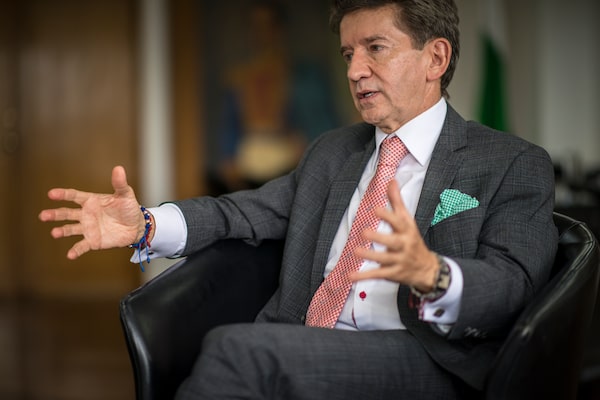
Luis Perez Gutierrez, Governor of Antioquia province, is a critic of the dam project.
The company’s reputation reflects the character of its home base. People in Antioquia, known as paisas, are legendarily hard-working and efficient. The capital, Medellin, once an infamously violent global hub of narco-trafficking, has remade itself as a centre for innovation and social investment.
“EPM is a source of national pride … nobody speaks badly of EPM,” says Maria Paulina Aguinaga, a Medellin city councillor who set out to investigate what happened after the flood. She has held hearings at city hall, but questioning EPM has won her no friends, or answers. “They almost killed me, tried to sacrifice me,” she recalls with a rueful laugh.
Since the disaster, public institutions that should have been scrutinizing the project have been jolted into action, she says. Federal, state and city prosecutors and auditors are investigating on two tracks.
The first concerns the contracts for the design and construction of the dam. The federal prosecutor began investigating “presumed irregularities of a criminal nature” in the tendering in 2012. But that probe languished until the flood. The allegations are that the terms of the tenders were changed repeatedly to favour the consortium that eventually won the right to build the dam.
The consortium is headed by Camargo Correa, a Brazilian firm ensnared in the giant Lava Jato corruption scandal, which began in 2014. The company has paid hundreds of millions of dollars in fines in Brazil, and signed co-operation agreements with prosecutors in which it acknowledged a long history of paying bribes to win contracts. Investigators in a half-dozen other countries are now running their own inquiries.
The Colombian media began to report on the controversy about the tendering process in 2012, but Camargo Correa has not, to date, been charged with criminal activity in Colombia.
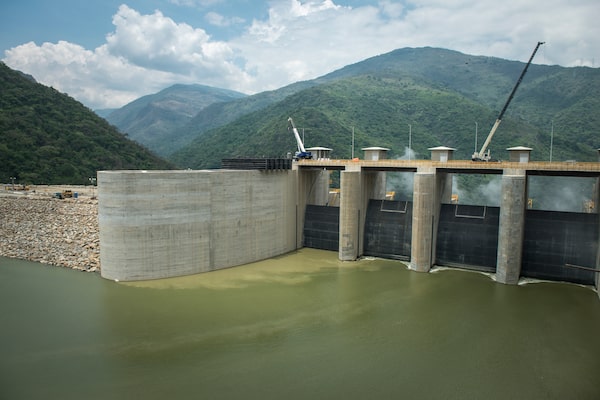
Heavy doors regulate the dam's daily release of water.
The second area of investigation concerns the building of the dam. The designs were changed dozens of times during construction. Those changes added to costs and, allegedly, to fees earned by the consortium. They also altered the dam’s structure. Colombia’s deputy auditor-general, Ricardo Rodriguez, says that in light of the Lava Jato revelations and the flood, he has teams tracking the money that flowed through the project, and the design and engineering modifications.
Yet EDC’s Ms. Maclean says the agency’s review process “did not identify allegations of irregularities prior to 2017.” Following the Lava Jato news, she says, EDC “engaged with EPM … We noted that EPM had launched an internal investigation and was co-operating with the authorities despite there not being a formal investigation [at the time]. The company also confirmed to us that the contract awarding for the Hidroituango project followed strict requirements for transparency and public oversight required under Colombian law.”
EDC’s review turned up no reason for alarm – which puts it in sharp contrast to research done by the primary lender to Hidroituango, IDB Invest, the private-sector arm of the Inter-American Development Bank Group. It led a consortium that provided $1.3-billion for the dam.
In 2015, IDB hired Jaime Ordonez, a Bogota civil engineer and professor at the National University of Colombia with expertise in hydroelectric projects, as lead consultant to provide them with an independent assessment of the dam. He and his colleagues were dismayed by what they found.
“We told them we couldn’t even find a final design for the dam itself,” recalls Mr. Ordonez, who has more than 50 years of experience working on dams. “There were no blueprints. They were all the time changing things in the design of the dam and we thought that was really incorrect.” He added that “there were many points of weakness in this project, which were very dangerous.”
To Mr. Ordonez’s shock, IDB refused to accept his report. “The bank thought that EPM was one of the best companies in South America, that it was very reliable, that our assessment could not be the way it was.”
In the end, the lender accepted the analysis only with an annexed rebuttal written by Integral Ingenieros Consultores, the original designer of the project. IDB proceeded with its loan.
Unlike the Canadian agency, IDB at least acknowledged it was warned of possible problems, but the response still disturbs Mr. Ordonez, because there is far more at stake than just the repayment of loans. “To me, the worst thing is that they made the ultimate mistake of trying to continue with the project without demolishing it [after the 2018 flood],” he says. “In the end, they are going to come to a crushing disaster … You have no idea how bad it could be – for the country it will be a complete ruin.”

In Hidroituango's monitoring room, a computer terminal displays the current state of the engine room. The machine house inside the mountain is as big as a 17-storey building.
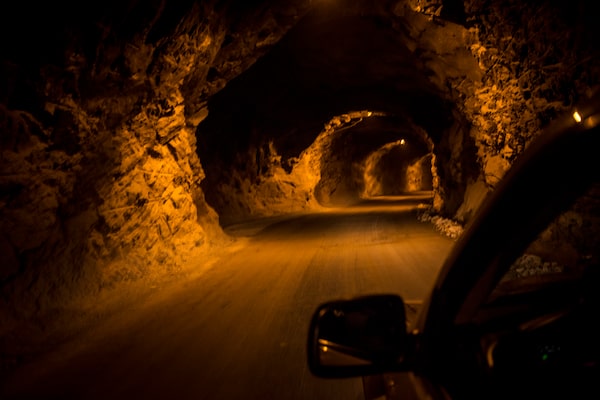
The mountain is crisscrossed with tunnels. Originally, two were built to divert water around the dam wall, but when the builders learned the mountain rock wouldn't support that design, they excavated a third that quickly began to erode. It was this third tunnel that burst in 2018 and caused the floods.
Hidroituango consists of a 225-metre high dam wall, three tunnels bored through a mountain to shunt the river around the dam construction and a machine house the size of a 17-storey building carved into the mountain. Behind the wall is a reservoir holding 20 million cubic metres of water. On top, a huge spillway sends a giant waterfall cascading down into the valley.
Construction was delayed from the outset – for reasons both within and beyond EPM’s control. This region of Colombia was severely affected by the country’s long civil war, and EPM faced fierce resistance from leftist rebels when it started to move equipment into the area.
After building commenced in 2011, EPM discovered that the mountain rock wouldn’t support the original dam design of two long diversion tunnels with closeable sluice gates. Instead it began to carve a massive third tunnel, racing to try to start power generation before Antioquia levied huge fines for missed deadlines. Critically, Camargo Correa opted not to seal the floor of the last tunnel, which began to erode almost immediately.
In 2013, EPM’s international advisers warned the company against the modified plan with its third tunnel. “The project’s own advisers said the plan was unconventional, full of unknowns and came with an unacceptably high risk level for a project of this size,” Governor Perez says. By 2016, when EDC made its loan, EPM was starting to block the first tunnel with a giant concrete plug. The next year, it began to seal the second tunnel.
But last April, the third tunnel had eroded so badly that the roof fell in, causing water to rise in the reservoir. It was nearing the top of the uncompleted dam wall when the tunnel was cleared by the force from the backup. A few days later, however, the tunnel collapsed again. Employees raced to unblock it but couldn’t, and couldn’t open the other two, either.
With all three tunnels clogged, the rising water threatened to pass over the top of the wall and cause the whole structure to collapse. Mr. Londono ordered the water diverted through the machine house – over millions of dollars of equipment. But two days later, on May 12, the third tunnel unblocked, and sent a giant wave downstream.
Staff at Hidroituango sent an evacuation warning. All of the people in Puerto Valdivia got to higher ground in time, but there was extensive damage to the town, and up-and-downstream. The Red Cross and the United Nations warned that as many as 130,000 people were at risk if the dam gave out.
“It was just bad luck,” Elkin Hernandez, a spokesman for EPM said one day recently while he stood above the dam wall and watched the river thundering through the spillway. “Until the day it happened, you would never have imagined that anything like this could go wrong.”
More than a year after the disaster, however, Ms. Aguinaga, the Medellin city councillor, says EPM has yet to adequately explain what it calls “the contingency” and the many missed warnings. How is it that, when the project was studied for many years, no one realized that the mountain’s geology would not support sluice gates? How was EPM able to ignore the strong warnings of its own advisers and build a third tunnel? Why was that tunnel allowed to erode to the point of collapse? “We haven’t been given answers to any of these,” she says.
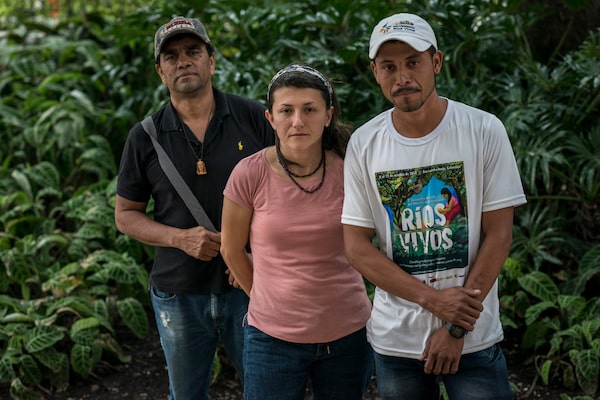
Alexander Zapata, Diana Giraldo and Guillermo Builes Bedoya are with Rios Vivos, an umbrella group of anti-dam activists. The group alleges two of its members were killed last year, and others faced threats.
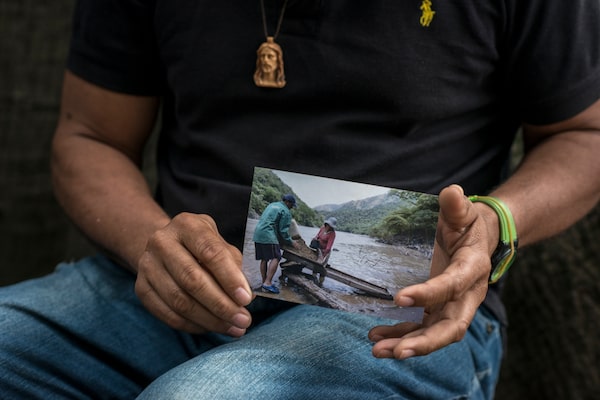
Mr. Zapata holds up a picture of himself and his spouse working on the Cauca River before the flood.
Beyond the engineering controversy, there were other aspects of Hidroituango that might have concerned EDC early on: the dam’s impact on the environment and on the communities around it. Under the agency’s terms of operations, loans made to “Category A” projects – “projects with potential significant adverse environmental or social effects that are sensitive, diverse, or unprecedented” – require a more extensive study. But the $466-million loan to EPM wasn’t for a specific project, and so this criteria were not applied.
EDC’s vetting process is facing new scrutiny. A Globe and Mail investigation, published last month, revealed that the agency discloses only the barest details about its financial transactions and that its clients include companies that have been dogged for years by corruption allegations and graft investigations.
A recently released federal review of EDC has also exposed serious shortcomings at the Crown corporation, noting that its disclosure practices fall far short of other financial institutions and that the agency is not legally obligated to consider the environmental or human-rights effects of the financial support it provides to exporters.
Local citizens’ groups have opposed Hidorituango for more than a decade. They say that the project is environmentally destructive and has disrupted the lives of thousands of fishers and so-called “artisanal” miners who pan for gold and other minerals on the river banks. They also allege that EPM has colluded with illegal armed groups to force people to abandon land or to sell it cheaply to the company.
Mr. Ordonez says there is no question the dam has had a significant, negative environmental impact on flora and fauna all through the valley – an inevitable outcome of such huge disruption in river flow.
It’s more difficult to verify the human-rights allegations. Rios Vivos, an umbrella organization of local dam opponents, says two of its members were killed last year and many more have been threatened – some so seriously that they fled. Prosecutors have not opened investigations, but one Rios Vivos leader, Diana Giraldo, says policing and the justice system in the rural area ranges from limited to non-existent.
The Colombian state also has a history of colluding with paramilitaries during the civil war, using them to fight leftist guerrillas. Local residents have no trouble believing those forces would now be acting on behalf of the interests of EPM or the government.
But EPM’s Mr. Londono says the last thing illegal armed actors want is the increased presence of the state that the dam has brought. “EPM’s presence in their territory destabilizes and complicates their way of doing business – they obviously prefer that we not be there,” he says.
The principle sources of campesino income here are growing coca (the raw ingredient for cocaine) and unlicensed mining for gold. Like other areas of Colombia, there are narco-traffickers and criminal bands who buy gold, and they target environmentalists and human-rights defenders. Ms. Aguinaga says it’s likely that local human-rights activists would be harassed or killed even without the dam.

This bridge, spanning the Cauca River in Puerto Valdivia, is the main commercial road between Medellín and the Caribbean coast. Traffic was halted during the 2018 flood.

Here, a bridge once connected the two edges of Puerto Valdivia, but the flood destroyed it.
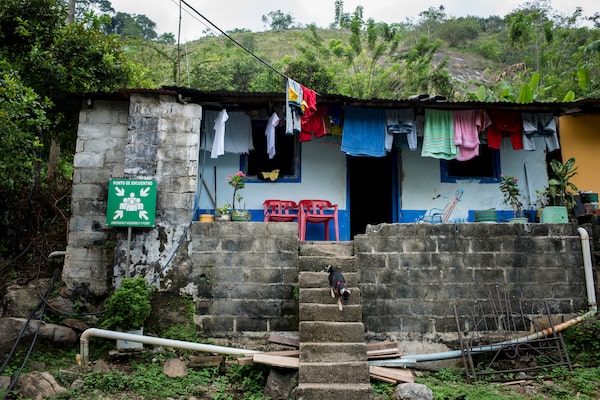
This house in the floodplain is still inhabited. It's also a rallying point for residents in case of a new emergency alert from the dam, so people can move to a safer place on higher ground.
When EDC was considering its loan to EPM, there were already public debates in Colombia about Hidroituango’s environmental impact, its social cost, the engineering changes and corruption in the tendering process. The Canadian lender was not deterred.
Ms. Aguinaga says she can imagine what happened: EDC was wooed by the paisa culture, and dazzled by EPM’s reputation. Mr. Londono is an effective and charming spokesman for his company, and at the dam site, engineers and managers extol the excellence of the project, its positive social impact and their own transparency.
EPM is still assessing the damage from the debacle and how long it will delay the project. Mr. Londono says the company expects to have the first two of four planned turbines generating by 2021 and the current estimate is that the disaster will add about 25 per cent to the cost of Hidroituango. It has created a liquidity crunch for EPM, which will seek to sell more than $1.65-billion in assets this year to raise cash.
Despite this, and the fact that thousands of people continue to live on alert for another flood, EPM’s reputation remains largely unscathed. Mr. Perez is in a pitched battle with EPM over whether the utility is ultimately responsible for the disaster and thus whether EPM should be paying fines. Yet even he says that EDC’s loan “has a very important role in the social development of Colombia. It was a great decision.”
Ms. Aguinaga also says she considers EPM a national asset. But the reverence for EPM means no managers were fired after the disaster. “Jorge Londono says he has faith in his team, so all the same people are still the ones making decisions,” she says.
And there is a sad postscript to this story, she observed: EDC was wooed into lending to Hidroituango, but not a single Canadian company landed contracts with EPM – the whole reason Canadian money came here in the first place.
But there may yet be a role for Canadian businesses: EPM is still hiring for the project. For example, it needs new teams to go back into Puerto Valdivia and rebuild the homes in Luz Elena Gutierrez’s neighbourhood, a medical clinic and bridges that connect the two sides of the town. Mr. Londono says EPM is all set to do it, but hasn’t been able to make repairs yet – because the Cauca River valley remains a “red zone” on high alert for another inundation by the dam.
With reports from Mathew McClearn in Toronto and Andrea Dominguez in Bogota
 See no evil: An investigation
See no evil: An investigation
Export Development Canada once described itself as the country’s ‘secret trade weapon.’ But a Globe and Mail review of thousands of transactions has revealed a pattern of secrecy and lax supervision, as Canadian money helps companies accused of bid-rigging, graft and human-rights violation.